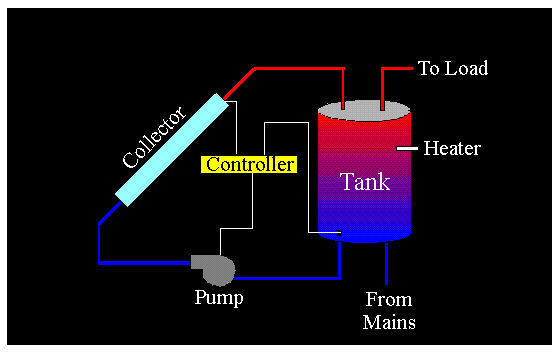
Simple Solar Domestic Hot Water System Demonstration

This TRNSED example is very simple. The system, shown above, consist of a flat-plate collector, a thermal storage tank, a pump, a pre-defined load, and a controller. In addition to these system components, a TRNSYS programmer would also need to add components to read or generate weather files, collect and process outputs, and display variables within Windows.
The user specifies the geographical location of the SDHW system, the beginning time and duration of the simulation, and sizes and settings for each of the primary system components.
During the simulation, an on-line display plots the values of several key system performance measures such as water mass flow rates and water temperatures at various points in the system. After a simulation is complete, an output file is generated containing a summary of the system performance on a monthly and annual basis. Included in this summary are such results as auxiliary electrical energy consumption, useful solar energy collected, and water heating load. Finally, the user can generate custom plots of several system variables.
Experiment with different simulation specifications. Examine the various menu items to explore viewing the output file, plotting, or printing.